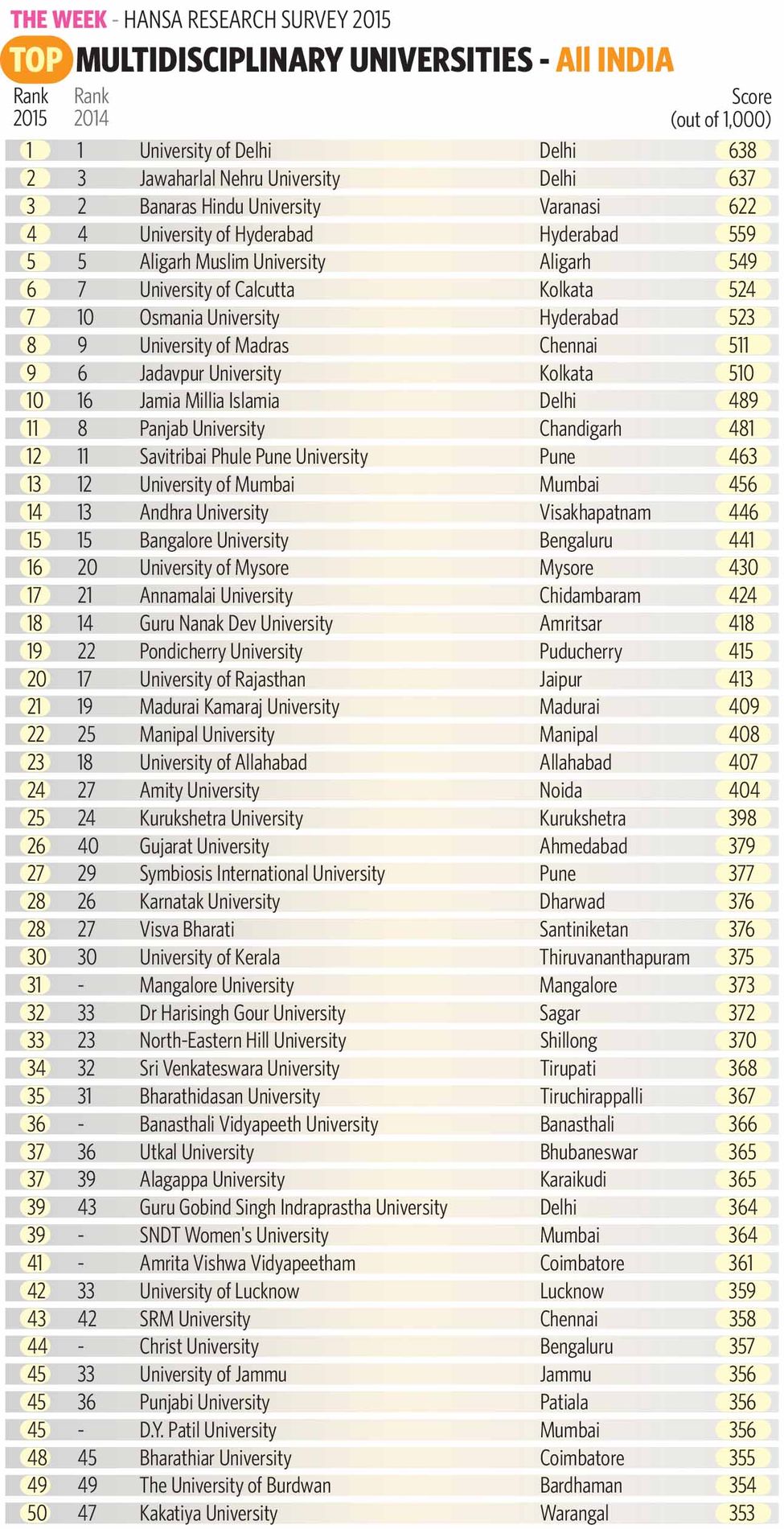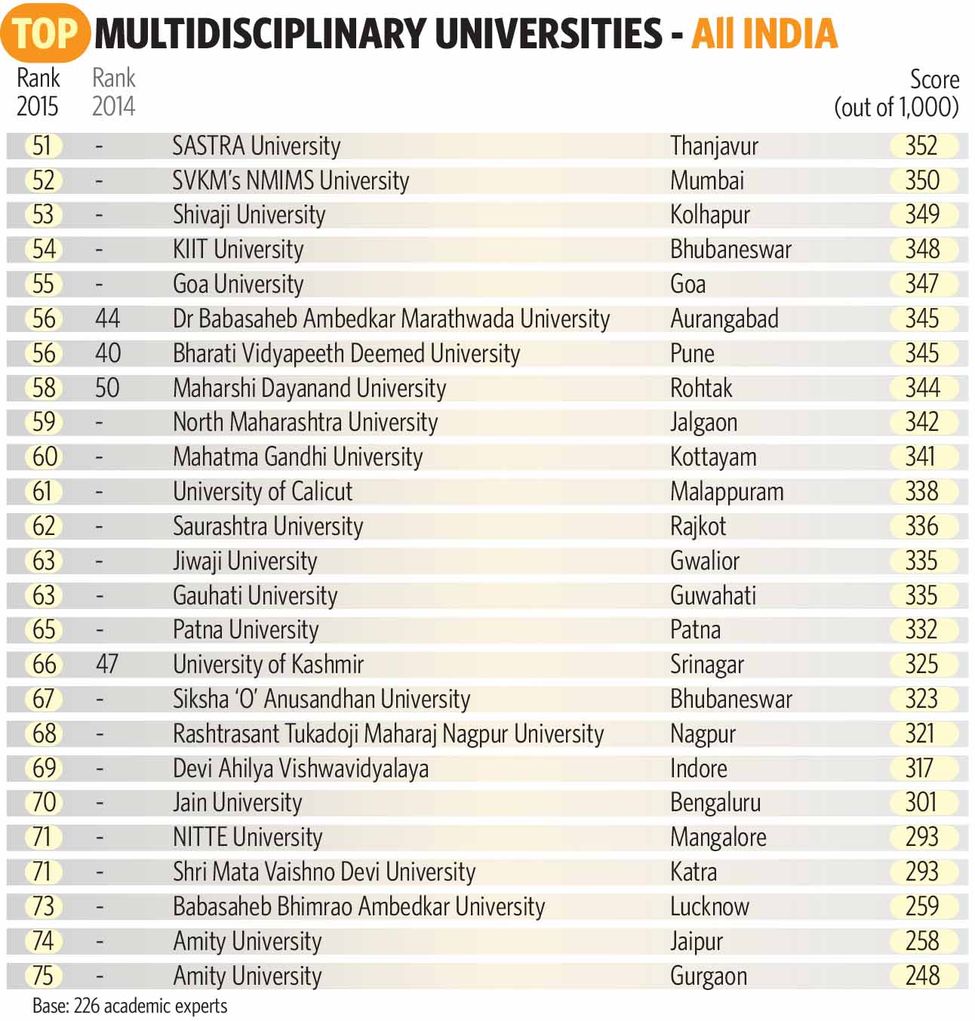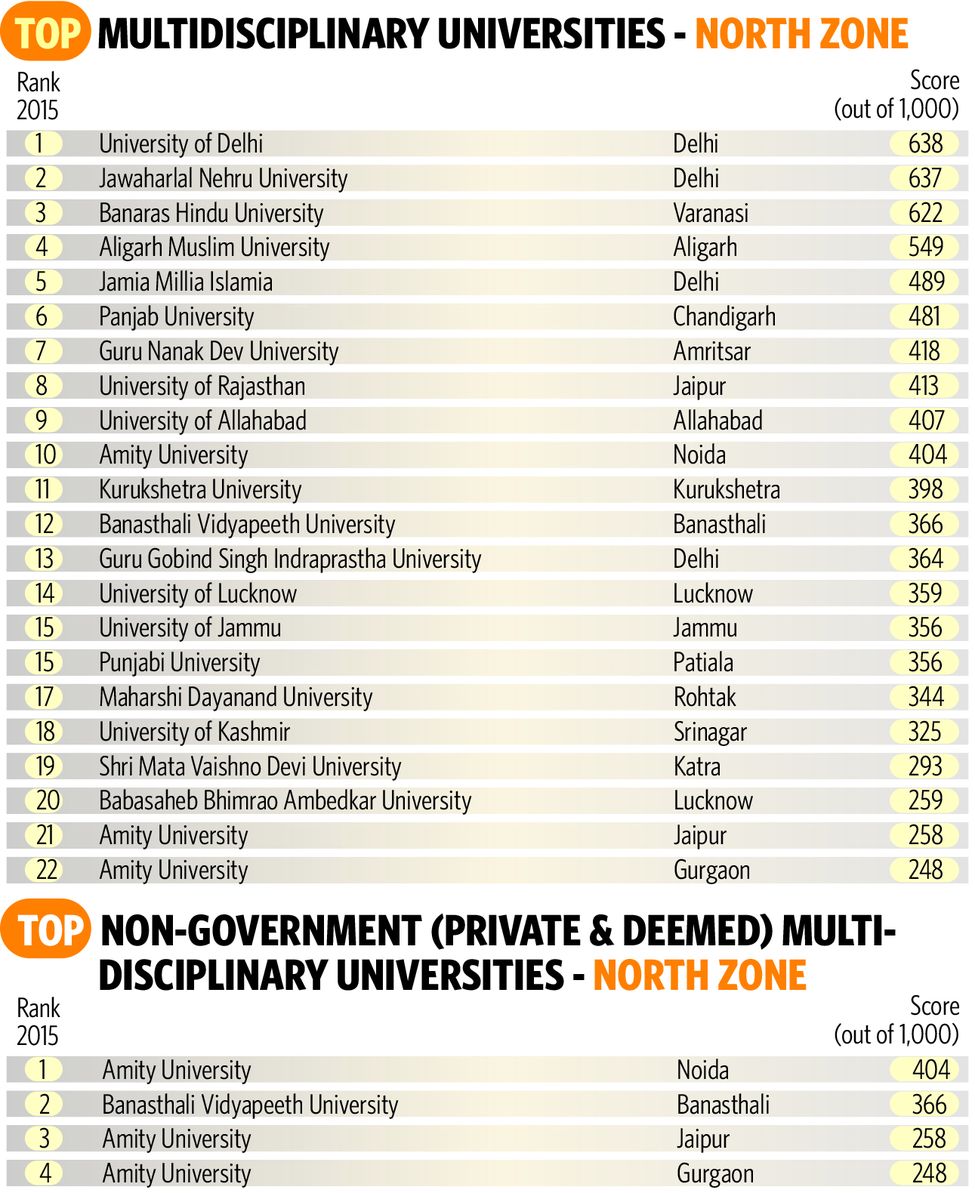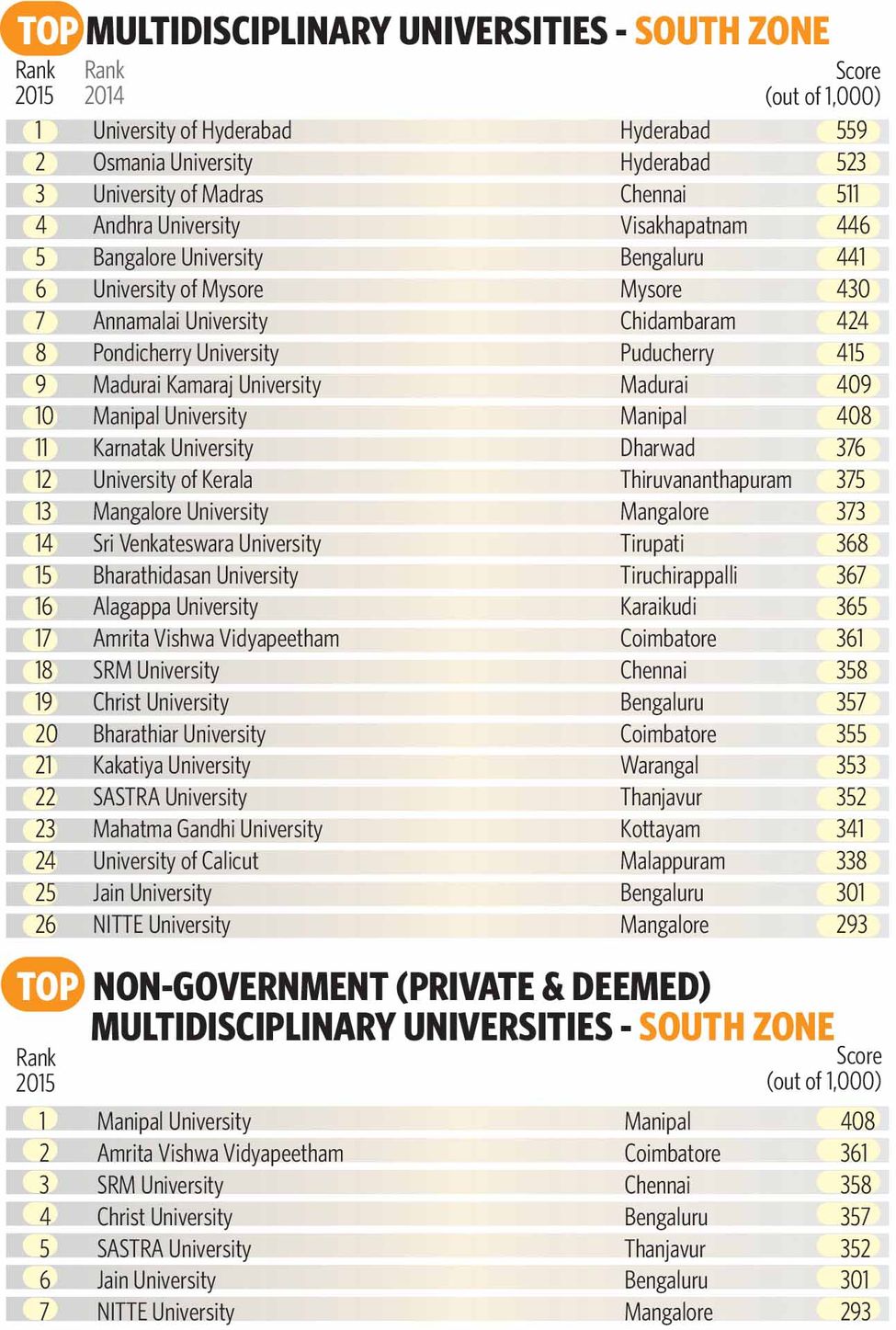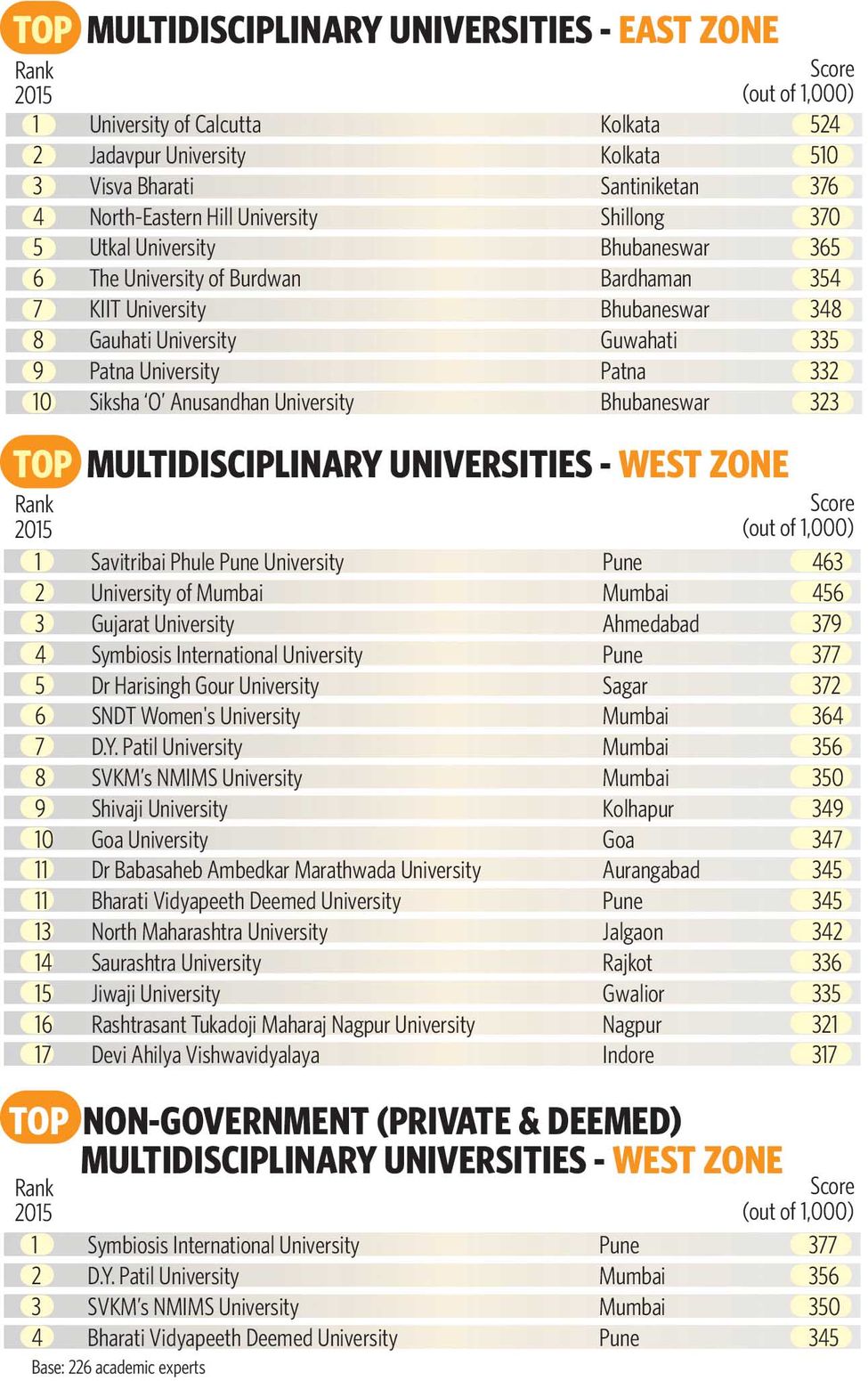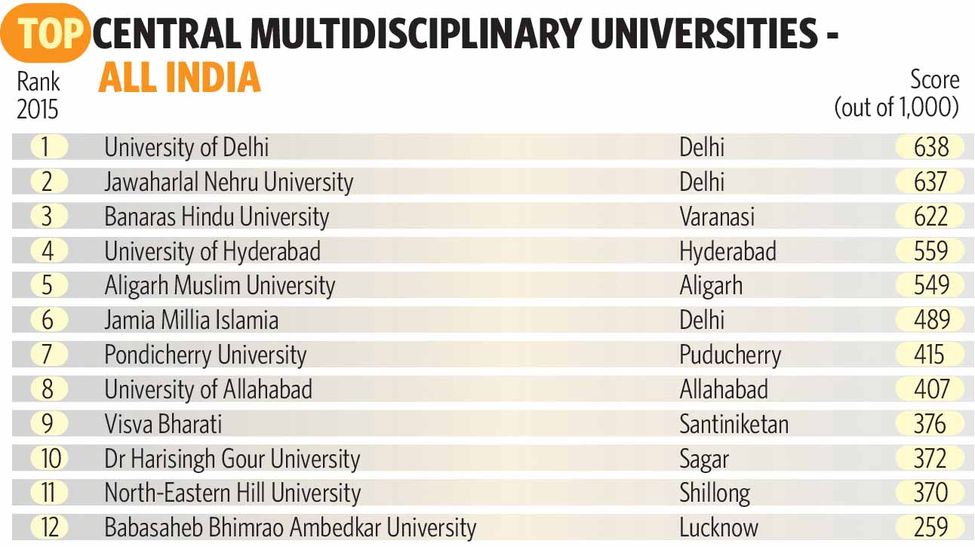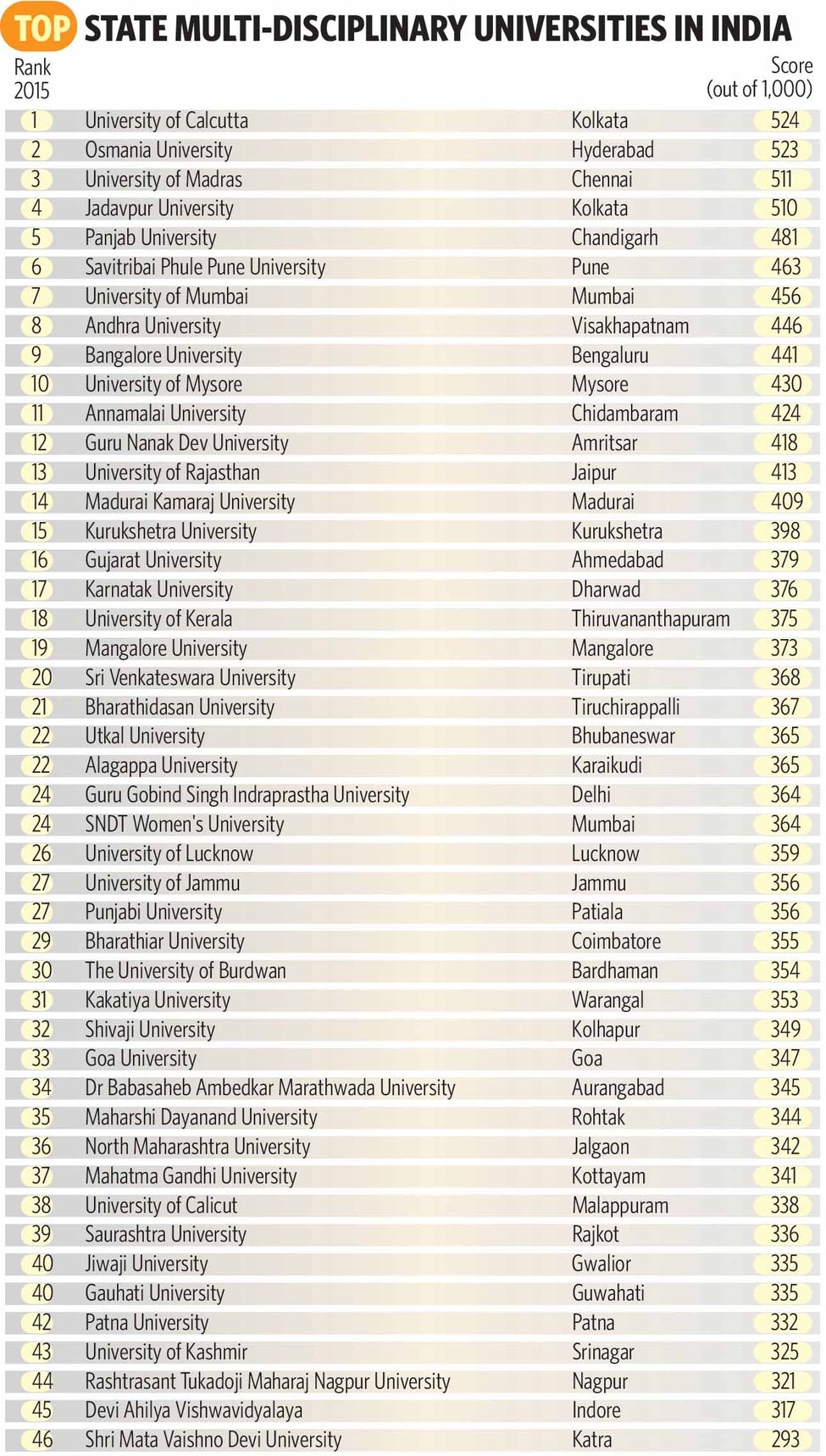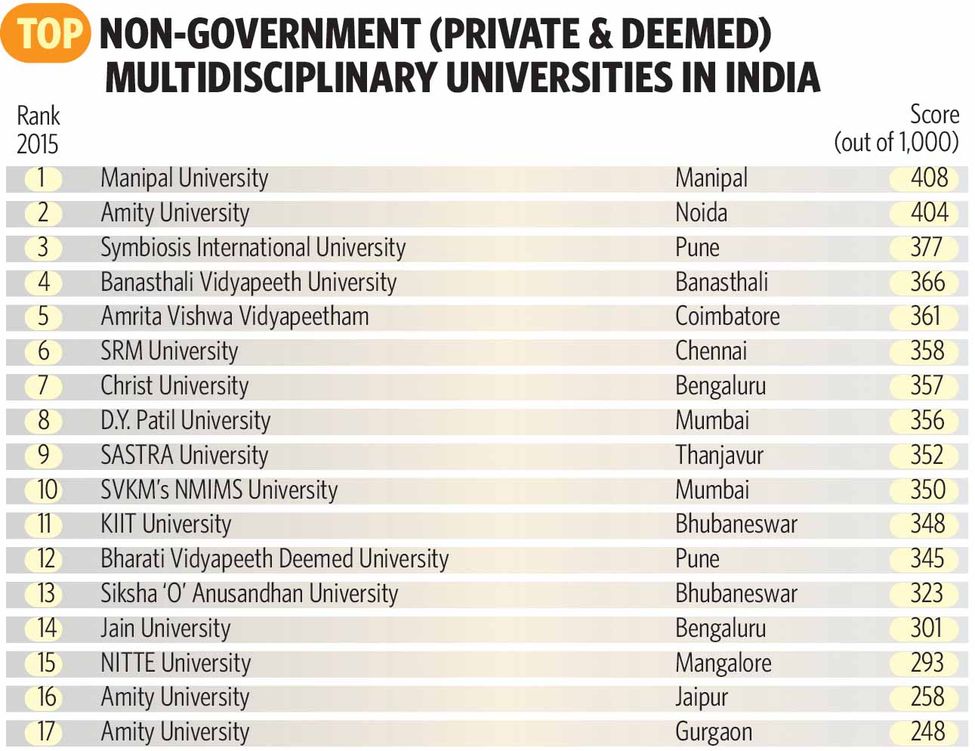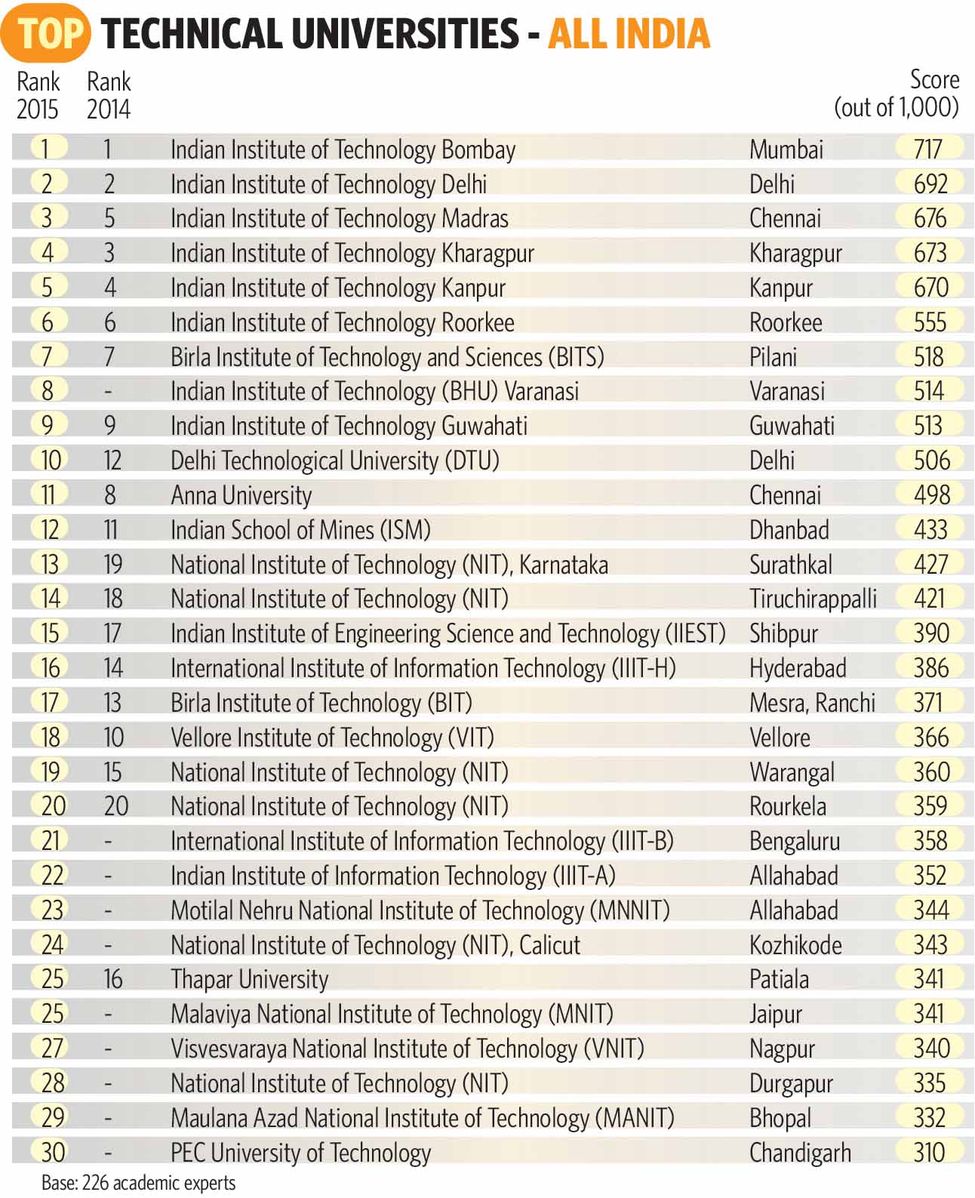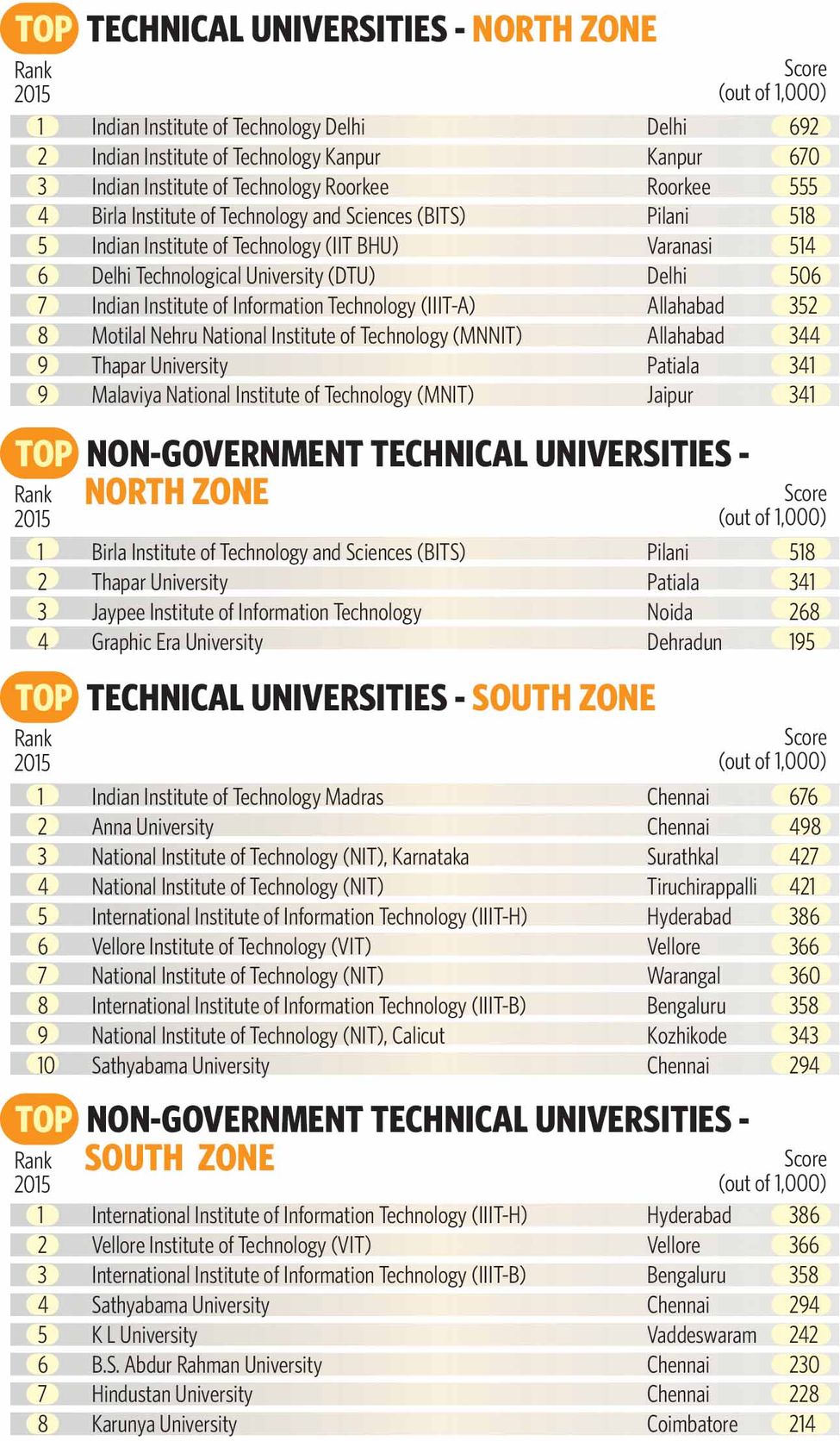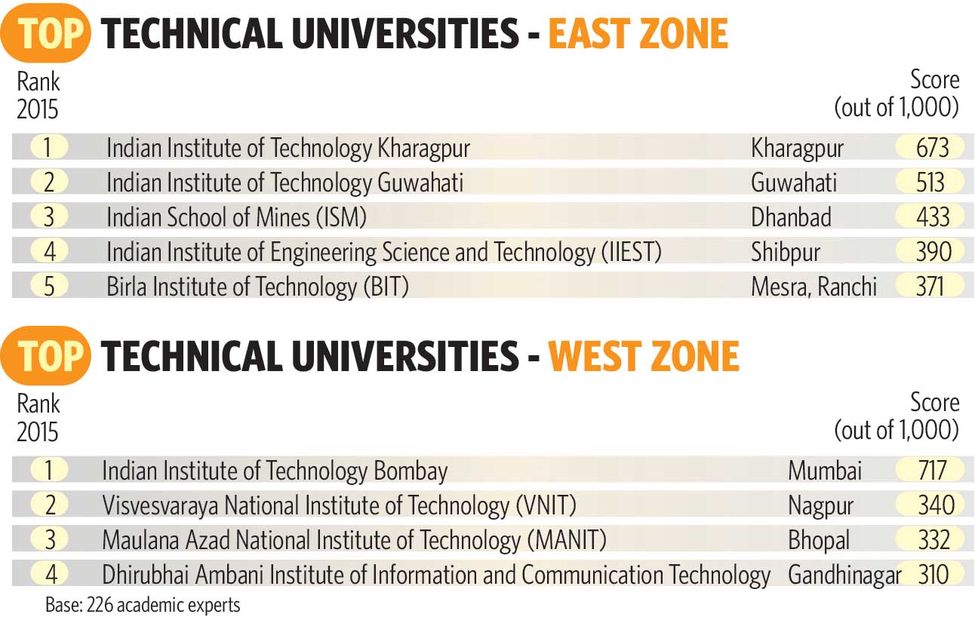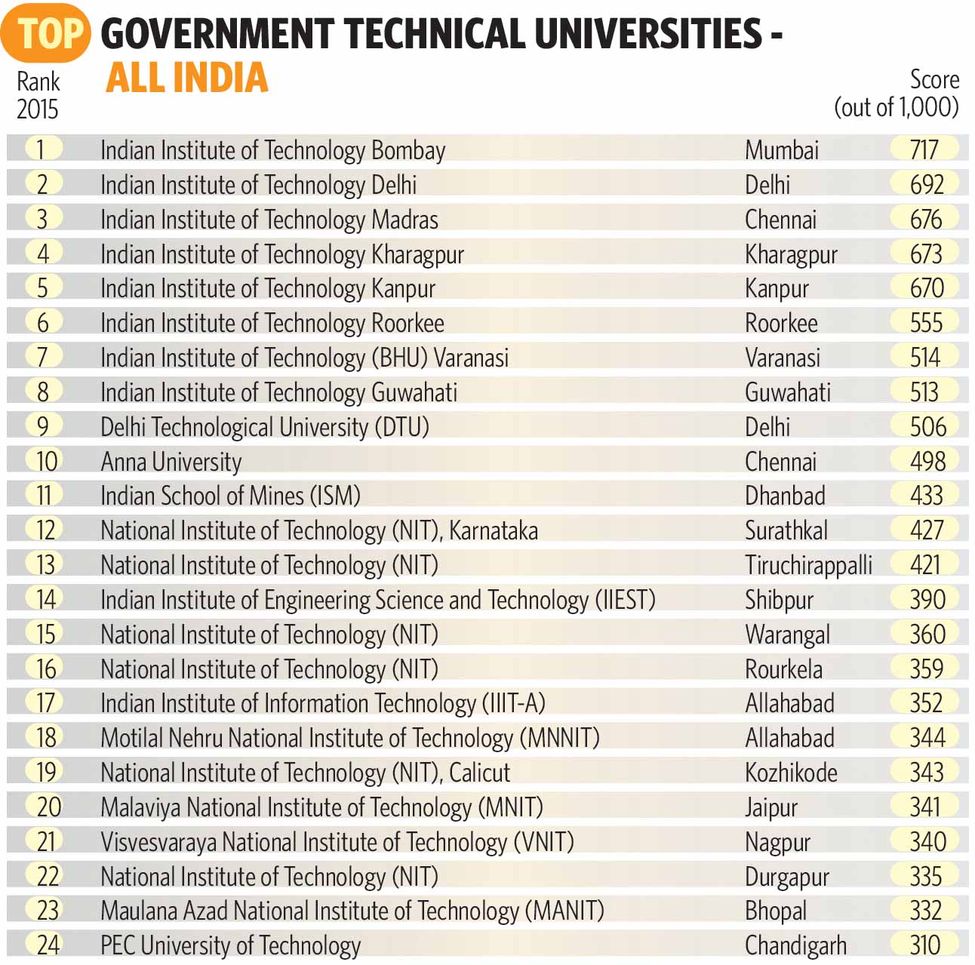Rati Bannerjee is at the most exciting stage of her life, where the joy of entering college overpowers the pain of leaving school. A student of Sacred Heart Convent in Tatanagar, Jharkhand, Rati has big dreams. A sprawling campus with an updated library, beautiful hostel and advanced recreational facilities form a part of the 17-year-old's dreams.
“Most traditional colleges have shabby classrooms, bad canteens and antiquated systems and processes. An 18th century kind of institute is out of the question for me. I want my college experience to be more interesting than my school life,” says Rati, who has applied to Shiv Nadar University in Greater Noida for a liberal arts programme.
“Infrastructure may be a big draw initially, but students are very smart these days. They understand that the quality of the college is as important. They get peer-group reviews and look up on the internet to make informed decisions,” says P.B. Sharma, vice chancellor, Amity University, Gurgaon.
Welcome to a whole new generation of students for whom public or private hardly matters. For them, only knowledge and exposure matter. Cost, geographical location and historical popularity are no bar for them.
“I do not believe that private universities or colleges are any bad. Government colleges here are so awful that students hardly attend classes. There is mismanagement, corruption and political influence,” says Akshay Sharma, Rati’s classmate, who wants to join Symbiosis International University. The public–private distinction may have blurred for this generation and private universities have surely caught their fancy.
Sixty per cent of college-going students in India are enrolled in private institutions. One reason for the popularity of private universities is a feeling that teaching quality is suspect in most government institutions. They also suffer from a lack of necessary infrastructure. High entry barrier and reservation quotas have also turned students’ attention towards private institutions.
According to a FICCI-Ernst & Young report, the number of state private universities has grown by 44 per cent in the last decade. Unaided private sector institutions account for 63.9 per cent of capacity and 58.9 per cent of enrolments. Approximately 20 million students pass senior secondary exams annually. The country needs colleges to accommodate them. Although new colleges are being set up, their numbers are far fewer than required. The newly-formed Central universities are facing problems of land and faculty, adding to the crisis.
“Our gross enrolment ratio is way below the world average. We need a large number of good colleges to increase this number. The government has proved to be inefficient in doing so, therefore private colleges are the need of the hour,” says S.B. Mujumdar, founder and president of Symbiosis International University.
There is a complaint that government colleges have lost touch with market reality and have failed to change with times. Curriculum is updated once in a decade and there is no autonomy in deciding courses and faculty. Private universities, too, have had their share of criticism mainly because of capitation fees charged by some colleges, but they have learnt their lessons. The new-age private universities are all set to make college education more appealing. Being autonomous, they are able to address some of the issues faced by government colleges, such as lack of research.
Lack of research and development is the main reason behind the enormous brain drain facing India. It is also the reason why Indian institutions fail to do well in global rankings. Most reputable global rankings take into account the research work undertaken, the number of papers published and their citations in international journals.
The new-age private universities have made research an intrinsic part of their curriculum. “Research and innovation is the basis of a knowledge economy. India was once a pioneer in research. We need to bring back that culture through an enabling environment,” says Vijay Gupta, vice chancellor of Greater Noida-based Sharda University.
Nidhi Malviya, a third-year student of chemical engineering at AISECT University in Madhya Pradesh, is working on a research project to make LED bulbs more effective. The university has tied up with Kwality Photonics, an LED manufacturer, to commercialise the technology, once research is completed. “If this research is successful, it will bring down the cost of LED lights,” says Nidhi. She hopes to receive a grant for the project from the department of science and technology. “Our aim is to address social problems through technology. Most of the research that we do has widespread applications in real life,” says Vijay Kant Verma, vice chancellor, AISECT University.
“Research needs a lot of capital and the government should pitch in to fund quality projects irrespective of it being public or private. Unfortunately, private universities are always considered second class citizens,” says S. Ramachandran, vice chancellor, Hindustan University, Chennai. Things are changing, albeit slowly. The government, too, has become aware that private institutions are taking up research more seriously than before. As a result, government grants for research projects at private universities are going up. “The All India Council for Technical Education’s move to make research mandatory for accreditation has helped. Research infrastructure at some of the private colleges is equal to what exists at marquee government institutions,” says Harkesh Mittal, adviser and member secretary of National Science and Technology Entrepreneurship Development Board.
Bengaluru-based MSR University of Applied Sciences has received Rs10 crore in grants over the last 4-5 years from various government bodies.
“Our specialised centre for research is working on a torque converter for the Army’s Arjun tank. Our students are also working on engine cooling systems for armoured vehicles,” says S.R. Shankapal, vice chancellor. Students at BML Munjal University (BMU), Gurgaon, are working on research projects on organic semiconductors and 3D printing. And, with research in focus, private universities are active in filing patents and publishing research papers. “We attach very high priority to research. Our faculty has filed for 240 patents and has published more than 3,000 research papers,” says Prashant Bhalla, director, Manav Rachna International University (MRIU), Faridabad. “We are looking at applied research because that can bring solutions to everyday problems,” says Akshay Munjal, director, BMU.
It is not just scientific research that is happening at private universities. Sonepat-based O.P. Jindal Global University (JGU) does not have a college of technology or sciences. It undertakes a significant amount of research in public policy, international relations and legal studies. Jindal Institute of Behavioural Sciences was involved in a research project titled “Study on suicides of state police personnel and suggestions to contain such cases”. It was funded by the ministry of home affairs.
Academic institutions across India have traditionally focused on teaching, leaving research to a handful of scientific organisations. Incentive for research, too, has been lacking, making research-oriented professionals move abroad. Private universities understand this and, therefore, are creating an enabling environment for research and innovation to prosper. This includes hiring the best of research brains from India as well as abroad and finding a balance between research and teaching. “We have developed a very strong staff development scheme wherein faculty members get research rewards for articles published in journals of one of the top 20 universities,” says C. Rajkumar, vice chancellor, JGU. Research is a significant component of college curriculum at JGU. “Students are assessed on the basis of research work they undertake,” he says. MRIU allocates separate research budgets for various streams. Students are now working on a sensor-based piano, which can be played with gestures.
Research, entrepreneurship and employability are the three themes that private universities are trying to embed in their culture. Recent start-up success stories of Flipkart, Snapdeal and Jabong are feeding into the minds of students. “Jobs are passé, entrepreneurship is in,” says Shekhar Gurumurthy, an engineering student at Hindustan University. With shrinking jobs and increasing urban rural divide, entrepreneurs will have solutions for a number of problems. Hence, universities want to produce job creators and not job seekers. BMU plans to create future “techpreneurs”. It will have an incubation centre and an advisory board that will approve projects. Noida-based Jaypee Institute of Information Technology (JIIT) invites start-ups to come and interact with students. “It acts as a great morale booster for the students. They clarify doubts on initial troubles in starting up a business,” says S.C. Saxena, vice chancellor. With IT being its strength, the university offers an M.Tech in IT and entrepreneurship.
Sharda University has a business incubation centre where the faculty handhold the students through various entrepreneurship projects. The university helps them with a small grant to start the venture. Selected projects get grants from the ministry of small and medium enterprises. The ministry has disbursed Rs10 lakh for eight projects on the campus. MRIU has a students' entrepreneurship network where senior students and faculty guide younger students on sharpening ideas and finding funds. Shivang Gupta, a second-year MBA student, is already running three ventures, including a professional car spa, a venture on LED lights and modular furniture. “The university’s 'corporate connect' programmes are very useful. We get to meet CEOs of well-known companies and ask questions about entrepreneurship,” says Shivang.
The new-age private universities want to become truly international, and stitching together foreign collaborations is a part of the strategy. “Students need to have a global outlook on various issues. After all, we are living in a globalised world,” says Gupta of Sharda University. BMU has roped in Imperial College, London, as its mentor institution. Next month, more than 20 students pursuing MBA at BMU will get a chance to join Imperial's business school for a seven-week course on design-thinking, entrepreneurship and innovation.
Nearly 30,000 Indian students go abroad a year to pursue undergraduate courses. Private universities want to stem this tide. JGU has more than 100 tie-ups in place with institutions like Rollins college, the University of Hong Kong and the University of Michigan to give an international experience to students. Sharda University has tie-ups with universities in China, Mexico and Europe for summer trainings. SRM University, Chennai, sends 100 students every year to foreign universities under its semester abroad programme. It has tie-ups with leading institutions such as MIT and Carnegie Mellon University in the US.
Universities are listening to the needs of a digitised world and are introducing courses that are in sync with times. Hindustan University has announced a course in cyber security. The universities are also offering combinations of various subjects in one course. “We have combined disciplines because we have observed that various disciplines are inter-related. We have combined mechanical and electronics, called mechatronics, aviation and electronics called avionics, automobiles and electronics called autotronics,” says Ramachandran. Thanks to the big data boom, courses in analytics are also getting popular. BMU offers an MBA in business analytics in association with IBM. It has recently announced an MBA in forensic accounting and corporate fraud. “This is first of its kind in India. Incidents of corporate fraud have sharply gone up and right now there is a dearth of required skill sets to detect these frauds,” says Tapan Panda, dean of the school of management, BMU. Sharda University offers an innovative two-year distributed MBA in banking and financial services. The unique model incorporates one year of classroom training and one year of on-the-job training that helps students develop analytical thinking.
While science and technology have always found favour from students, liberal arts have started witnessing an increased interest. A well-rounded education, similar to the US system, is what liberal arts provide. “Arts education in India typically focuses on one subject, but liberal arts give me the opportunity to study several subjects and then choose the one I like for my majors,” says Rhea Kuthoor, a first-year student of BA liberal arts at JGU. “There is so much of variety in learning, which is a different experience altogether.”
With the government becoming more serious about accreditation of educational institutions, private universities are looking to actively gain recognition. “Accreditation helps in getting credibility in the market,” says Bhalla. “Universities are able to benchmark themselves and work on their shortcomings.”
Research Methodology
THE WEEK-Hansa Research Best Universities Survey 2015 was conducted by collecting factual information from more than 500 leading universities in India. This was followed by asking 226 academic experts, across 20 cities, to nominate and rank top universities. Subsequently, eight qualitative in-depth interviews were done among these experts to validate the collected data and to provide the rationale for the rankings.
The perceptual score of a participating university was calculated on the basis of the views of the experts. The data submitted by the university and data collected from secondary sources regarding various parameters, including infrastructure, research and placements, were used to calculate its factual score.
By combining the perceptual and the factual scores, the composite score was calculated, which determined the final rank.
